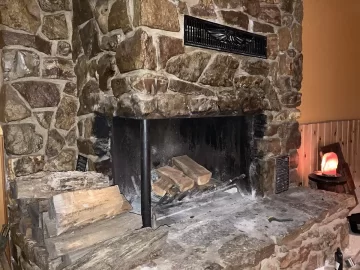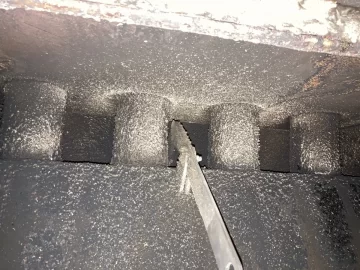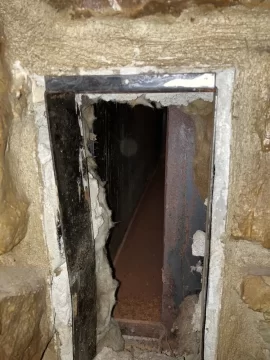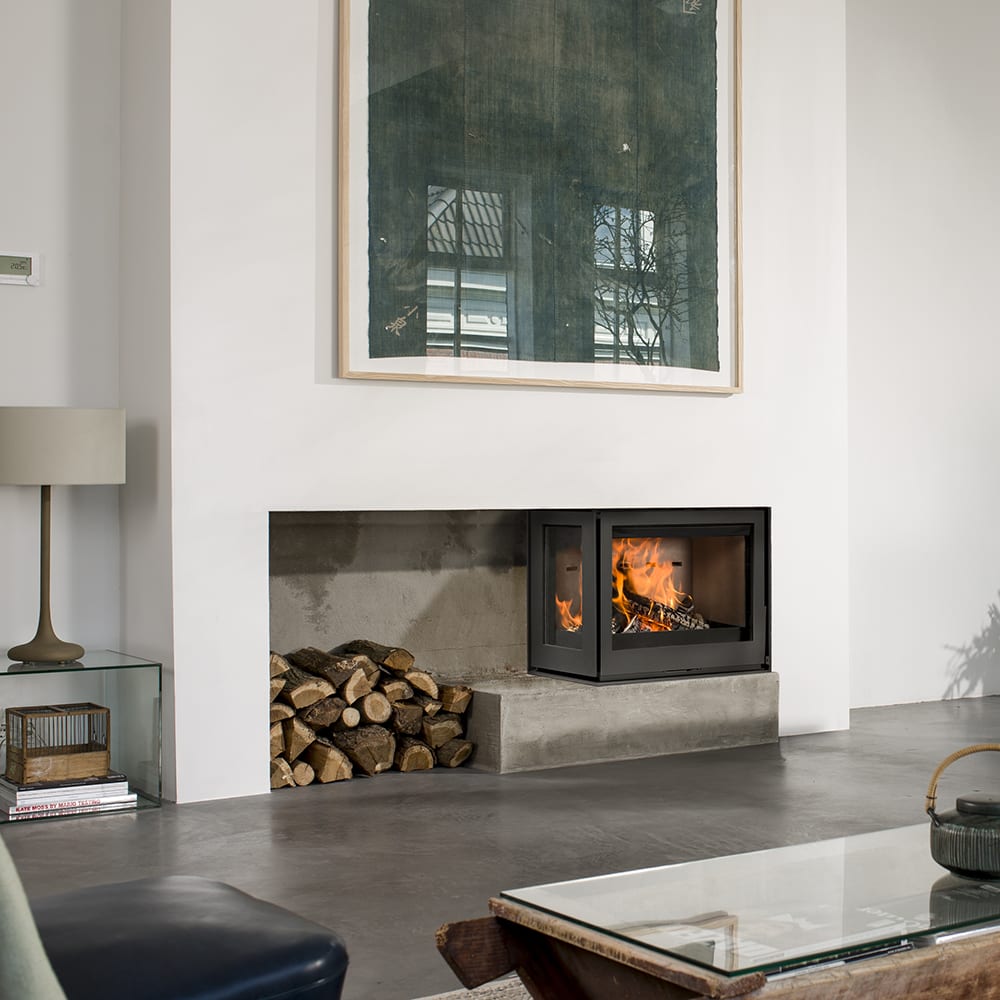Hi, we purchased our first home recently, and are looking into learning about fireplace operation and how to optimize what we have here. Its a 1970 built home with a big stone fireplace. It has an ash dump chute that goes down into the basement, and I can see cinder blocks going up through the attic and then out a stone chimney, so its a pretty substantial chunk of masonry. The actual burning area has a metal "shell" and air spaces around the back and side of the shell with a fan (to help distribute heat I assume?). The fan sucks air in from one side, and it blows out from the other side and the top. There are even 4 pipes (see picture) right below the damper to help get the air really hot before it comes out the top vent. There arent currently any doors or screen.
I've read that old fireplaces arent very efficient, and its often better to place a "fireplace insert" in it. Is this metal shell with venting and fan basically a built in fireplace insert though (minus doors)? There aren't any doors currently, and I'm betting it'll be hard to custom fit some, but I'm also considering taking up welding and will need a project so I'm not opposed to making some!
Do I have a good base here to build from here and make doors, or is it a lost cause and be better off (besides saving time not having to make custom doors) buying an insert? Any other improvements that could be done? The ash chute runs opens to the basement, but the back of it runs down by the carport, so Im also considering adding an outside air vent to that maybe? I'll also be sure to have the chimney cleaned before using.
Thanks for any tips for what we should do with this!



I've read that old fireplaces arent very efficient, and its often better to place a "fireplace insert" in it. Is this metal shell with venting and fan basically a built in fireplace insert though (minus doors)? There aren't any doors currently, and I'm betting it'll be hard to custom fit some, but I'm also considering taking up welding and will need a project so I'm not opposed to making some!
Do I have a good base here to build from here and make doors, or is it a lost cause and be better off (besides saving time not having to make custom doors) buying an insert? Any other improvements that could be done? The ash chute runs opens to the basement, but the back of it runs down by the carport, so Im also considering adding an outside air vent to that maybe? I'll also be sure to have the chimney cleaned before using.
Thanks for any tips for what we should do with this!






